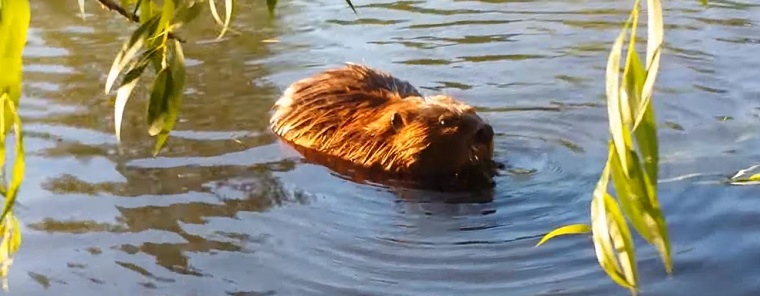-
info@aaanimalcontrol.com
Call us for help in your town
Humane Wildlife Education
Beaver Prevention - How to keep Beavers away from pond or stream
Need beaver removal in your hometown? We service over 500 USA locations! Click here to hire us in your town and check prices - updated for year 2020.
Although trapping is usually the obvious choice for getting rid of animals such as beavers, there are actually quite a few options open to you. This is definitely the case when you have a pond or stream that you’re trying to protect.

The idea behind keeping beavers away is to make their life as difficult as possible when they are near your property. You could start by looking at the trees they have already started to destroy. The beavers will come back to the trees, sometimes taking bark and other bits from it as food to eat right away, some to take back and stash for when colder weather comes. Sometimes, however, they don’t even bother eating what they have stolen from the tree at all. They use it as construction material, weaving it in around the existing structure of the dam they are building, making it stronger and all the more difficult to tear down.
Those trees are actually quite easily protected with a homemade combination of latex paint and sand. When mixed together, the texture is very gritted and, when applied to the tree, will provide a covering that the beavers do not enjoy chewing on. It doesn’t feel great for their teeth, and when it doesn’t feel great, they won’t continue to chew on it. This is a relatively inexpensive way to protect the trees and other wooden structures on your land.
For the parts you can’t protect with the sand paint concoction, you can use mesh wiring or hardware cloth. It’s tough and durable, so the beavers can’t chew through it even with their powerful teeth and jaws, and it’s, once again, relatively inexpensive. Large areas, such as flower beds or vegetable patches, can be protected with a framework of wood and this mesh wiring. When placed over the patches you want to protect, you have a cage, of sorts, that this animal can’t easily break through.
While we’re on the subject of fencing, a fence is actually a very good idea, although not always possible with certain types of land, admittedly. If you make it high enough — around four feet or so — the beavers should be kept out quite nicely.
If you know there are beavers already hanging out in your pond or stream, you could install a drain pipe. This is quite an extensive job, we know, but when you make that particular patch of water inhospitable for the beavers to live in, they’re not going to want to live there. If the water starts to drain out, for example, there won't be enough to comfortably home the creature and it will soon toodle off to find somewhere else to set up home.
There are a few things that you will need to do before you just start draining bodies of water, obviously. You must work out whether or not that particular body of water belongs to you before you take any action. If it belongs to the local city or council, you must alert them to the beaver problem. You certainly don’t want to pay for something that you don’t need to, and it’s a very well known fact that beaver dams are remarkably hard to get down. In most cases, industrial sized construction equipment is necessary. Such items are usually quite costly to rent, and some of them require special permits to operate too. Unless you have those permits, you will also need to hire someone to work the machinery or equipment.
Finally, there are repellents that you can look at. If you were to ask experts, they would generally tell you that beaver repellents do not work. These include garlic, mothballs, ammonia, and much more besides. Wildlife eviction fluid can sometimes work but, again, doesn’t always come with great results. This is usually made up of the gland secretions and urine of male predatory wildlife, such as foxes and coyotes. These can prey on beavers and might be enough to scare them off. Although, it must be said, the fluid doesn't work for long when it’s near water.
Repellents need to be constantly applied in order for them to work, so if you do not keep up with the reapplications, whatever animal you may have been successfully keeping back will just come right back onto your land again. It’s a never-ending cycle, and a classic example of why repellents rarely work to keep any nuisance wildlife at bay.
Read more about How to get rid of beavers.
For more information, you may want to click on one of these guides that I wrote:
How To Guide: Who should I hire? - What questions to ask, to look for, who NOT to hire.
How To Guide: do it yourself! - Advice on saving money by doing wildlife removal yourself.
Guide: How much does wildlife removal cost? - Analysis of wildlife control prices.


















